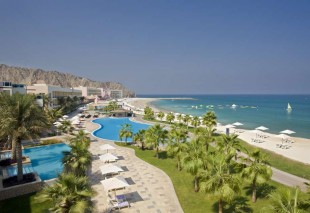

MidEast leads world on hotel demand growth in 2011

Demand for hotel rooms in the Middle East grew by nine percent in 2011, the highest growth rate in the world, according to data published by STR Global.
It said the region reported both occupancy and average room rate improvements for the full-year, driven by the strong demand growth.
Elizabeth Randall, managing director of STR Global, said 2011's demand growth was the highest yearly growth in the past seven years.
Abu Dhabi reported the largest growth in occupancy, increasing 9.9 percent to 64.8 percent, followed by Dubai with a seven percent increase to 75.4 percent, STR Global's data showed.
Cairo, Egypt, was the worst occupancy performer in the Middle East and Africa region, falling 44.9 percent to 36.1 percent, followed by Beirut with a 12.9 percent decrease to 56.2 percent.
Jeddah and Riyadh were the top regional performers in 2011 for average daily rates. Jeddah's ADR rose by 6.9 percent last year to $203.51 while Riyadh rose 6.6 percent to $271.67.
Dubai topped the regional chart for the largest revenue per available room (RevPAR) increase last year, jumping 10.7 percent to $168.64, the STR Global statistics showed.
Cairo's RevPAR fell the most in 2011, by 49.2 percent to just $42.71.
Overall in 2011, the Middle East and Africa region reported a 6.8 percent decrease in occupancy to 57.1 percent, a 5.3 percent increase in ADR to $162.81 and a 1.8 percent decrease in RevPAR to $92.99.
Randall said: “Due to the Arab Spring starting early 2011 across Northern Africa, the performances between Africa and the Middle East differ greatly.
“Africa reported declining occupancy for all months in 2011, with average room rates declining throughout the latter half of the year.”
She added: “The Middle East reported occupancy and average room rate improvements driven from the strong demand growth, the highest growth rate for the global regions."